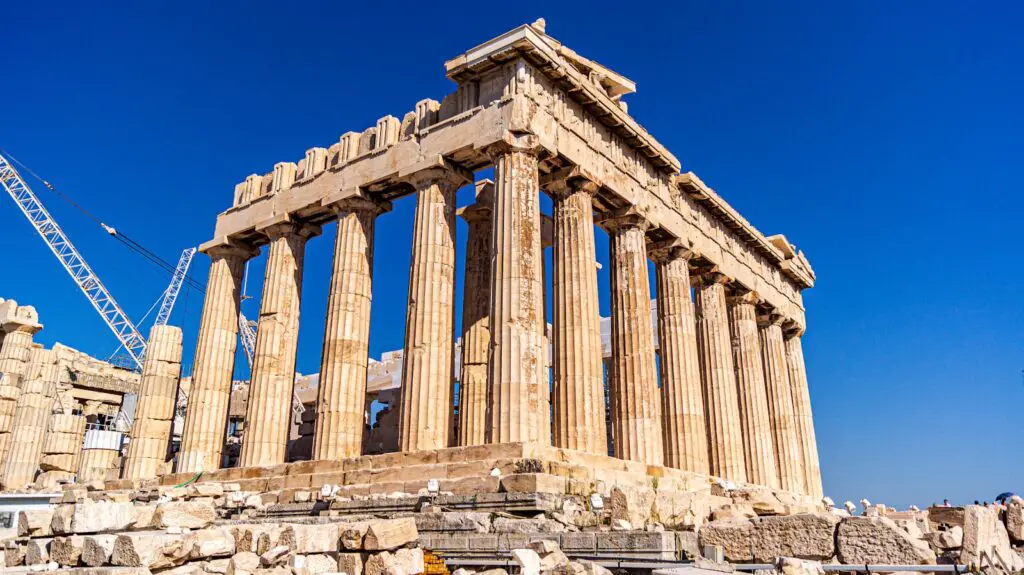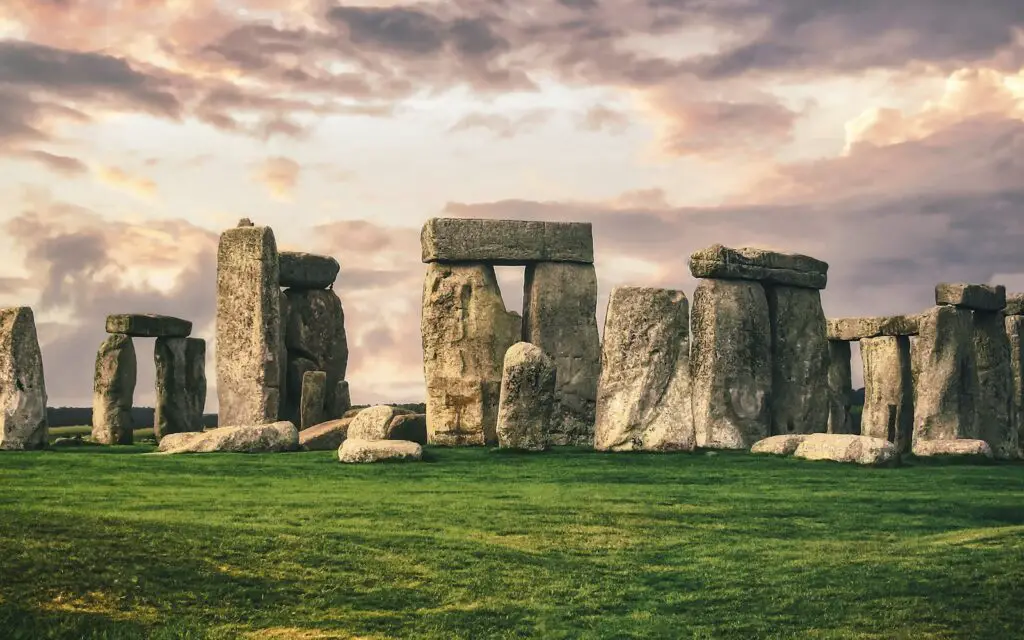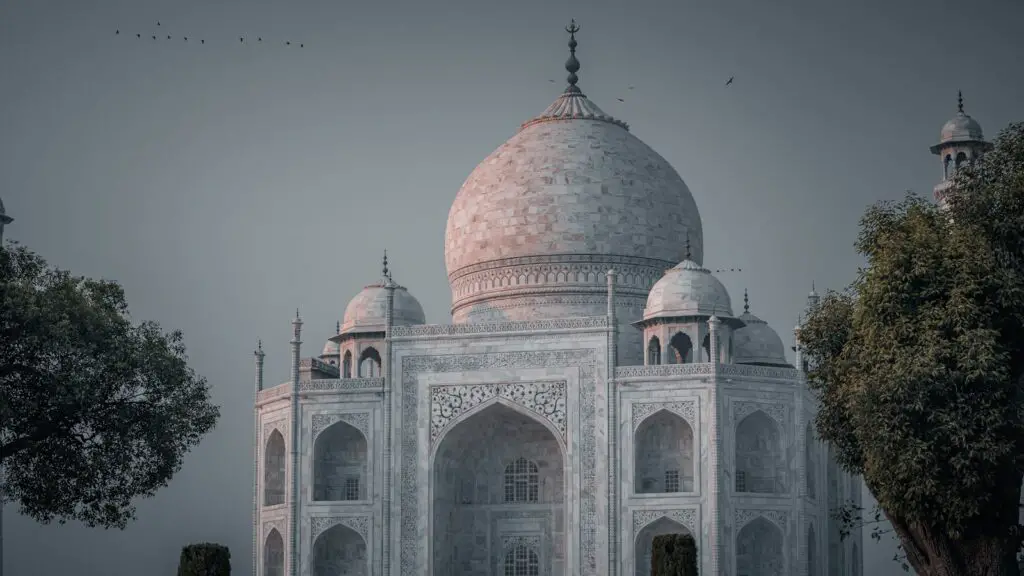Introduction: The Importance of Historical Sites
Historical sites are more than just old buildings and ancient ruins; they are gateways to the past. They offer unique insights into cultures, traditions, and lives that shaped the world today. Exploring historical sites is not only fascinating but educational and inspiring.
- Connection to the Past
- Visiting historical sites creates a personal connection to the past. Imagine walking through the ancient streets of Rome, where emperors once roamed.
- The tactile experience is wholly different from reading about it in textbooks. Seeing, touching, and experiencing firsthand makes history come alive.
- Educational Value
- Historical sites serve as living classrooms. They offer real-world experiences that textbooks and screens can’t replicate.
- Museums, monuments, and preserved places often provide detailed information, tours, and exhibits to deepen understanding.
- Students and history buffs gain a better grasp of historical events, cultural developments, and human achievements.
- Cultural Appreciation
- Delving into historical places fosters respect and appreciation for different cultures and traditions.
- It encourages visitors to learn about the customs, values, and heritage of the people who lived there.
- This understanding builds tolerance and cross-cultural appreciation in a globalized world.
- Tourism and Economic Benefits
- Historical sites attract millions of tourists annually, boosting local economies.
- Shops, restaurants, hotels, and guides benefit from tourism, creating jobs and opportunities for local communities.
- Preservation efforts are often funded by the revenue generated from these visits, ensuring historical preservation for future generations.
- Preservation of History
- Preserving historical sites maintains our cultural legacy. It ensures that significant places survive natural decay and human encroachment.
- These sites serve as tangible reminders of our shared history, helping to educate and inspire future generations.
- Inspiration and Motivation
- Walking in the footsteps of historical figures can be incredibly inspiring. Visitors to places like Mahatma Gandhi’s ashram or Martin Luther King Jr.’s birthplace feel a renewed sense of purpose.
- These visits can spark creativity, bravery, and a spirit of change in one’s personal and professional life.
- Social and Personal Benefits
- Sharing trips to historical locations fosters social bonds. Friends, families, or groups exploring together create lasting memories.
- These shared experiences can strengthen relationships, provide content for storytelling, and create a sense of shared mission and understanding.
Historical sites are vital preserves of the human journey. While museums and documentaries offer glimpses into history, nothing can replace the experience of standing where history happened. Time travel may be a fantasy, but these sites are the next best thing.
1. The Colosseum, Rome
The Colosseum, also known as the Flavian Amphitheatre, is one of Rome’s most iconic landmarks. This almost-2,000-year-old structure is an architectural marvel that has withstood the test of time. Visitors can’t help but be awed by its massive size and historical significance.
What to Expect
Stepping inside the Colosseum is like traveling back in time. Here are some highlights:
- Ancient Arena: The central arena where gladiators once battled is a must-see. Imagine the roaring crowds cheering on their favorite fighters.
- Historical Exhibits: Throughout the Colosseum, numerous exhibits explain its history, construction, and the lives of those who fought and performed there.
- Underground Chambers: Explore the underground chambers where animals and gladiators awaited their fate.
Tips for Visiting
If planning a trip to the Colosseum, here are some tips to make the most of your visit:
- Buy Tickets in Advance: The Colosseum is one of Rome’s most popular tourist destinations. Booking tickets online ahead of time can save hours of waiting in line.
- Guided Tours: Consider a guided tour to get deeper insights into its history and significance. There are many tour options, including private and group tours.
- Best Time to Visit: Early morning or late afternoon are ideal times to visit to avoid the midday heat and large crowds.
Fun Facts
Here are a few fun facts about the Colosseum:
- Capacity: The Colosseum could hold between 50,000 and 80,000 spectators.
- Construction Time: It was built in under 10 years, from AD 70 to AD 80.
- Damages and Restoration: Despite earthquakes and stone-robbers, a significant portion of the Colosseum remains intact today due to continuous restoration efforts.
Nearby Attractions
While visiting the Colosseum, don’t miss other nearby historical sites:
- Roman Forum: Just a short walk away, the Roman Forum was the center of daily life in ancient Rome.
- Palatine Hill: Offers stunning views of the Circus Maximus and the Roman Forum.
Ideal for
The Colosseum is perfect for history buffs, architecture enthusiasts, and anyone interested in ancient Roman culture. Whether alone, with friends, or family, the Colosseum provides a fascinating look into Rome’s glorious past.
2. The Great Wall of China
The Great Wall of China is a must-see historical marvel. This grand structure stretches over 13,000 miles across northern China, showcasing the ancient engineering prowess of different Chinese dynasties. Its construction began in the 7th century BC and continued until the 17th century.
Highlights of the Great Wall
- Ancient Architecture: The Great Wall features various styles of bricks and stone, showing the evolving methods of ancient builders over centuries.
- Watchtowers: These strategic points offered a vantage for spotting invaders. The most famous ones, like the Tower of 8 Diagrams, are worth a photo.
- Majestic Views: Walking along the Wall offers stunning views of the landscape, from rugged mountains to serene forests.
- Cultural Significance: It’s a symbol of Chinese strength and perseverance and represents the unification of China.
Fun Facts
- Length: If stretched out straight, the Wall would cover more than one-third of the Earth’s circumference.
- Visibility: Contrary to popular myths, it’s not visible from space with the naked eye.
- Workers: Millions of workers, including soldiers, common people, and prisoners, worked on the Wall.
Visiting Tips
- Best Time to Visit: Fall provides comfortable weather and vibrant colors, while spring bursts with blooming flowers.
- Top Sections: The most popular sections are Badaling, Mutianyu, and Jinshanling, each offering unique experiences.
- Badaling: The easiest to hike and most well-preserved section.
- Mutianyu: Known for fewer tourists and lush scenery.
- Jinshanling: Offers a more rugged hike with breathtaking views.
- What to Bring: Comfortable walking shoes, plenty of water, a hat for sun protection, and a camera.
Getting There
- From Beijing: Various tour companies offer day trips. Public buses and private taxis are also available.
- Guided Tours: Consider hiring a guide to learn about the Wall’s rich history and hidden details.
Walking the Great Wall of China is like stepping back in time. Every stone tells a story of the emperors, defenders, and builders who once walked the very path you’re treading. This site isn’t just a wall; it’s a journey through Chinese history.
3. Machu Picchu, Peru
Machu Picchu, the ancient Incan city, stands majestically atop the Andes Mountains in Peru. This iconic site, often referred to as the “Lost City of the Incas,” was built in the 15th century and later abandoned. Recognized as a UNESCO World Heritage site, it’s a breathtaking blend of history and nature.
Imagine walking through these stone ruins, surrounded by lush green peaks and shrouded in mist. You’ll find terraces, temples, and palaces, each telling stories of a civilization with incredible architectural prowess.
Highlights to Explore
- The Sun Gate (Inti Punku): The entry point offers dramatic views of the entire site. Watching the sunrise from the Sun Gate is an unforgettable experience.
- Temple of the Sun: This semi-circular construction demonstrates remarkable stonework and astronomical significance.
- The Intihuatana Stone: Known as the Hitching Post of the Sun, it’s believed to be a ritual stone linked to astronomical events.
Tips for Visiting
- Best Time to Visit: April to October is the dry season and the best time to explore.
- Tickets and Guides: Purchase tickets in advance to avoid long lines. Hiring a guide can enrich the visit with fascinating info.
- Acclimatization: Arrive a few days early in Cusco to adjust to the high altitude.
Fun Facts
- Discovery: The site gained international attention in 1911 through the exploration of Hiram Bingham.
- Complex Engineering: The terracing and construction showcase advanced Incan engineering, particularly their innovative agricultural techniques.
Local Culture
Visiting Machu Picchu isn’t just about the ruins. Spend time in nearby Cusco or Aguas Calientes to immerse yourself in Peruvian culture with local crafts, foods, and traditions. The vibrant textiles, intricate pottery, and delicious Peruvian cuisine provide a fuller sense of the region’s rich heritage.
Essential Packing
- Hiking Gear: Comfortable shoes and a sturdy backpack are essential.
- Weather Preparedness: Layered clothing and a rain jacket, as mountain weather can be unpredictable.
- Camera: Capture the stunning vistas and historical details.
Embarking on this journey, one can’t help but feel a sense of wonder at the ingenuity of the Inca civilization. Machu Picchu isn’t just a destination; it’s an unforgettable adventure into the past.
4. The Pyramids of Giza, Egypt
The Pyramids of Giza are mind-blowing. Located near Cairo, these pyramids are some of the oldest and most awe-inspiring human-made structures in the world. When someone mentions Egypt, it’s hard not to think of these iconic pyramids.

A Little Background
- Great Pyramid: Built for Pharaoh Khufu, also known as the Pyramid of Cheops. It’s the largest of the three and one of the original Seven Wonders of the World.
- Pyramid of Khafre: Slightly smaller but looks taller due to its higher location and steeper sides.
- Pyramid of Menkaure: The smallest of the three, but still stunning in its own right.
What To See
- Sphinx: Nearby, the Great Sphinx stands guard. It’s a creature with a lion’s body and a human face, believed to depict Pharaoh Khafre.
- Solar Boat Museum: Close to the Great Pyramid, this museum houses an ancient wooden boat, which is thought to have been used in the pharaoh’s funeral rites.
- Sound and Light Show: If you’re around in the evening, the Pyramids light up in a spectacular display with narration about their history.
Tips for Visiting
- Best Time: Visit early in the morning or late afternoon to avoid the peak heat.
- Dress Code: Light, breathable clothing and comfortable shoes are a must.
- Guides: Opt for an Egyptologist guide to get in-depth historical context.
Fun Facts
- Each pyramid aligned with star constellations, featuring advanced ancient engineering.
- The structures were originally covered in gleaming white limestone, making them shine brightly under the sun.
How To Get There
- Public Transport: Buses and taxis available from Cairo.
- Tours: Many guided tours are available, offering easy transit and in-depth explanations.
The Pyramids of Giza are a timeless wonder. Whether you’re a history buff or just love seeing amazing structures, they’re worth the trek to Egypt.
5. The Acropolis, Athens
The Acropolis of Athens stands as a symbol of ancient Greek civilization, radiating history and culture from every corner. Located in the heart of Athens, it’s an easy spot to visit and one that promises epic views and endless wonder. Here’s why it should be on your bucket list:

Highlights of the Acropolis
- The Parthenon: This iconic temple dedicated to the goddess Athena is the crown jewel of the Acropolis. Its towering columns and intricate carvings leave everyone in awe.
- Erechtheion: Famous for its unique architectural style and the Caryatids – the six draped female figures that serve as pillars – this temple has a mystical aura.
- Propylaea: This grand entranceway to the Acropolis sets the stage, giving visitors a taste of the magnificence within. The impressive Doric columns are a sight to behold.
- Temple of Athena Nike: This small yet significant temple rejoices in a prominent position and offers stunning views of the city. It’s dedicated to the goddess of victory.
Things to Do
- Walking Tours: There are plenty of guided tours available which provide fascinating insights into the history of these ruins.
- Photography: Perfect for photography enthusiasts, the Acropolis offers endless opportunities for that picture-perfect shot with ancient architecture as the backdrop.
- Athens Gate Hotel Rooftop: Grab a drink and admire the Acropolis from a distance. It’s a view that captures ancient and modern Athens in one frame.
Tips for Visiting
- Timing: Visit early in the morning or late in the afternoon to avoid the crowds and the heat.
- Tickets: Book your tickets online in advance to save time and skip the lines.
- Wear Comfortable Shoes: The terrain is rocky and uneven, so comfy shoes are a must.
Nearby Attractions
- Acropolis Museum: Don’t skip this modern museum that houses artifacts found on the Acropolis. It provides context and a deeper understanding of what you see on-site.
- Plaka District: Wander through this charming neighborhood filled with narrow lanes, traditional tavernas, and lively shops.
Fun Fact
- Birthplace of Democracy: The Acropolis isn’t just about ancient temples. It’s where democracy was born, making it a site of global historical significance.
“The Acropolis reminds us of the glory that was Greece and the grandeur that was Rome.” – Edith Hamilton, renowned classicist
This ancient citadel remains timeless, an unforgettable piece of human history perched high above the modern city.
6. Stonehenge, England
Stonehenge, nestled in the English countryside, is one of the world’s most famous prehistoric monuments. This iconic stone circle has intrigued historians, archaeologists, and visitors alike for centuries.

A Brief History
- Constructed: Believed to have been built between 3000 BCE to 2000 BCE.
- Purpose: The exact purpose remains unknown, with theories ranging from an astronomical observatory to a religious site.
- Builders: Thought to be constructed by several groups over the centuries, including the Neolithic and Bronze Age peoples.
Key Features
- The Stones: Comprised of two main types – the larger sarsen stones and smaller bluestones.
- Layout: The stones are arranged in a circular layout, with some stone structures forming arches.
- Altar Stone: At the center of the structure lies the massive Altar Stone.
Visitor Experience
- Visitor Center: Offers a range of exhibits, from archeological findings to life-sized replicas of Neolithic houses.
- Guided Tours: Available to provide a deeper understanding of the site’s history and significance.
- Sunrise/Sunset Visits: Especially popular during the Summer and Winter Solstices when the stones align with the sun’s position.
Things to Note
- Accessibility: The site is accessible with pathways designed for all visitors, including those with disabilities.
- Weather: The weather in England can be unpredictable, so it’s advisable to dress accordingly.
- Photography: Visitors are welcome to take photos. Sunrise and sunset moments are particularly stunning.
Fun Facts
- Stone Origins: The bluestones are believed to have been transported from Wales, over 140 miles away.
- Legends: Myths suggest that the legendary wizard Merlin magically transported the stones from Ireland.
Stonehenge is a must-visit for anyone fascinated by ancient history and mysteries. Wandering among the stones, one can’t help but reflect on the human ingenuity of our ancestors.
For more information, the official Stonehenge website offers details on planning your visit and purchasing tickets. Don’t miss this timeless landmark to truly feel the pulse of history under the vast English sky.
7. Petra, Jordan
Petra, the “Rose City,” is a jaw-dropping archaeological site in Jordan. Nestled in a secluded valley, Petra’s most famous for its pink-hued rock-carved architecture and water conduit system. With a rich history dating back to 312 BC, the ancient city was once the thriving capital of the Nabatean Kingdom. So, why should you visit Petra?
Major Attractions in Petra
- Al-Khazneh (The Treasury)
- This iconic structure is the crown jewel of Petra.
- Famous for its detailed façade carved from sandstone rock.
- Don’t miss seeing it illuminated during Petra by Night.
- The Siq
- A narrow gorge leading into the city.
- Walk through to experience towering cliffs and intricate rock formations.
- It’s the grand welcome path to Petra’s hidden wonders.
- Monastery (Ad-Deir)
- Larger but less ornate than the Treasury.
- Reward yourself with breathtaking views after a steep hike.
- Royal Tombs
- A series of grand burial sites.
- Features stunning tombs like the Urn Tomb and the Silk Tomb.
- Each offers a unique artistic design.
Best Times to Visit
- Spring (March to May):
- Comfortable daytime temperatures.
- Ideal for hiking without breaking a sweat.
- Fall (September to November):
- Cooler temperatures make for perfect daytime exploration.
- Avoid summer’s brutal heat.
Tips for Travelers
- Wear Comfortable Shoes:
- Petra is vast and involves a lot of walking and climbing.
- Good hiking shoes will save your feet.
- Hydrate Yourself:
- Carry a bottle of water, as the desert climate can be harsh.
- Many vendors offer refreshments along the way.
- Guided Tours:
- Opt for a guided tour to gain deep insights into Petra’s history.
- Local guides share fascinating stories that bring the ruins to life.
Getting There
- By Air:
- Fly into Queen Alia International Airport in Amman.
- From there, it’s a four-hour drive to Petra.
- By Bus:
- Frequent buses run from major cities like Amman and Aqaba.
- An economical and scenic way to approach Petra.
Petra is not just an Instagrammable location but a place steeped in history, awe-inspiring architecture, and natural beauty. Perfect for history buffs and adventure seekers alike!
8. The Eiffel Tower, Paris
The Eiffel Tower, known as “La Tour Eiffel” by the locals, stands as a majestic symbol of Paris and French ingenuity. Constructed between 1887 and 1889 for the 1889 World’s Fair, it was initially criticized by some of France’s leading artists and intellectuals. Fast forward to today, and it’s an iconic fixture on the Parisian skyline, welcoming millions of visitors each year.
Key Facts and Features
- Height: Originally 300 meters tall, the addition of antennas has brought its height to about 324 meters.
- Engineering Marvel: Designed by Gustav Eiffel, it was the tallest man-made structure in the world until the completion of the Chrysler Building in New York in 1930.
- Material: Made from iron, it weighs approximately 10,000 tons.
- Illumination: It sparkles for five minutes every hour on the hour after sunset with 20,000 light bulbs creating a dazzling light show.
Visitor Experience
- Observation Decks:
- First Floor: Features glass floors and exhibits about the tower’s history.
- Second Floor: Offers amazing dining options, including the popular Le Jules Verne restaurant.
- Third Floor: Provides breath-taking panoramic views of Paris and is accessible by both elevators and stairs.
- Eating Out: Dining at the Eiffel Tower is a unique experience. Not to mention the delicious macarons from the on-site shops.
- Souvenirs: Don’t miss out on picking up some authentic, Eiffel Tower-themed trinkets from the gift shops.
Fun Facts
- Nicknames: Often lovingly called “La Dame de Fer” or “The Iron Lady.”
- Repairs: The tower undergoes regular maintenance with the paint being reapplied every seven years or so.
- Pop Culture: The tower has been featured in numerous movies, TV shows, and even video games.
Tips for Visitors
- Best Time to Visit: Early morning or late in the evening to avoid the crowds.
- Tickets: Pre-purchase your tickets online to skip the lines.
- Safety: Security checks are in place, so be prepared to go through them.
- Photography: The tower’s illuminated version is protected by copyright; this is crucial for professional photographers.
Visiting the Eiffel Tower offers a timeless experience, letting tourists immerse themselves in the romance and splendor of Paris. Don’t forget to bring your camera to capture those magical moments!
9. The Taj Mahal, India
Who hasn’t heard of the Taj Mahal? This iconic mausoleum located in Agra, India, is a masterpiece of Mughal architecture. Built by Emperor Shah Jahan in memory of his beloved wife, Mumtaz Mahal, the monument is a symbol of endless love. People come from all over the globe to witness its beauty.

Must-See Elements
- The Main Dome: The massive white marble dome is often the first thing people notice. It’s especially stunning under the moonlight.
- The Gardens: Spread over nearly 17 hectares, the gardens are divided into four parts, each symbolizing a part of heaven.
- Reflection Pools: The pools create perfect reflections of the Taj, adding to its allure. Perfect for those Instagram shots!
- The Calligraphy: Verses from the Quran are inscribed in beautiful calligraphy, and they get larger as they get higher up to create an optical illusion.
- The Minarets: Four towering minarets frame the structure. They actually lean slightly outward to protect the main tomb in case of collapse.
Best Times to Visit
- Early Morning: Fewer crowds and a serene atmosphere. Plus, those sunrise hues are unreal.
- Evening/Twilight: The setting sun gives the white marble a golden tint, which is truly magnificent.
Fun Facts
- It took 22 years and over 20,000 workers to complete.
- The materials were sourced from all over Asia. Marble came from Rajasthan, jade from China, turquoise from Tibet, and more.
- There’s a fascinating optical illusion: the Taj seems to appear closer as one moves away and vice versa.
Tips for the Visit
- Footwear: You’ll need to cover or remove your shoes to enter certain areas.
- Photography: Drones aren’t allowed. Regular cameras are fine, but no tripods.
- Tickets: It’s a good idea to book tickets online to avoid long queues at the entrance.
Nearby Attractions
- Agra Fort: A UNESCO World Heritage site just 2.5 km away. Almost like a twin to the Taj, it’s worth a visit.
- Mehtab Bagh: Located across the Yamuna River, offering another picturesque view of the Taj.
Don’t forget to grab a street food snack or authentic Mughlai meal while you’re in town. And load up on souvenirs; marble replicas of the Taj Mahal are a popular pick.
10. The Alhambra, Spain
Among the hills of Granada, Spain lies The Alhambra, a remarkable gem showcasing Islamic architecture. This palace and fortress complex dates back to the mid-13th century and reveals the grandeur of the Nasrid dynasty. Here’s why it’s a can’t-miss historical site:
Architectural Beauty
- Intricate Design: The palace is known for its detailed stucco work, tile mosaics, and wooden carvings.
- Court of the Lions: Features an exquisite courtyard with a central fountain supported by twelve lion statues.
- Generalife Gardens: Offers lush greenery, beautiful fountains, and breathtaking views of the Sierra Nevada mountains.
Rich History
- Nasrid Palace: Once home to Moorish rulers, it later became a Christian court after the Reconquista.
- Charles V Palace: A Renaissance addition that contrasts with the Nasrid architecture, adding a layer of historical depth.
- Alcazaba: The oldest part of the Alhambra, this fortress offers visitors panoramic views of Granada.
Must-See Features
- Hall of the Ambassadors
- The largest room in the Alhambra, featuring a grand ceiling and intricate wall decorations.
- Patio de la Acequia
- Famous for its long pool flanked by flower beds, fountains, and colonnades.
- Myrtles Courtyard
- Known for its serene rectangular pond, reflecting the walls and ornate arches.
Tips for Visitors
- Book Tickets in Advance: The Alhambra is incredibly popular, so it’s wise to secure tickets ahead of time.
- Guided Tours: Join a guided tour to deeply understand the rich history and significance of the different sections.
- Best Time to Visit: Early morning or late afternoon to avoid crowds and enjoy softer light for photography.
The Alhambra is more than just a historical site; it’s a journey through time, unveiling layers of cultural evolution and artistic prowess. Its beauty captivates every visitor, making it an unforgettable destination.
Tips for Planning Your Visits
Planning visits to historical sites can be a rewarding experience. Here are some tips to help get the most out of each trip:
- Do Some Homework
- Spend some time researching the historical significance of the site.
- Dive into some local legends or read a book set in that era.
- Check Seasonal Hours
- Many sites have different operating hours depending on the season.
- Look up their schedule online before heading out to avoid disappointment.
- Book Tickets in Advance
- Some popular historical sites often require advance booking.
- Purchasing tickets online can also sometimes snag a discount or bundle deal.
- Guided Tours vs. Self-Guided Tours
- Weigh the pros and cons of both guided and self-guided tours.
- Guided tours can provide rich historical context, while self-guided tours offer flexibility.
- Dress Comfortably
- Wear comfortable shoes, as many historical sites involve a lot of walking.
- Check the weather forecast and dress appropriately.
- Snacks and Water
- Carry some snacks and a water bottle to stay hydrated and energized.
- Some sites may have limited food options onsite.
- Respect the Rules
- Be aware of any site-specific rules, such as no photography zones.
- Respect barriers and don’t touch artifacts, which helps preserve them for future generations.
- Pack Light, But Smart
- Just take essentials: camera, sunscreen, and a portable charger.
- A small backpack can make it easy to carry everything without feeling weighed down.
- Arrive Early
- Get there as soon as the site opens to avoid crowds and have a more peaceful experience.
- Early visits often allow for better photo opportunities.
- Local Eats and Treats
- End the day by enjoying local cuisine; many historical sites have eateries nearby.
- Local food can add another layer to the cultural experience.
- Interact with Locals
- Chat with local guides or even other visitors, sometimes they share interesting tidbits.
- Locals may also suggest lesser-known sites nearby to enhance your visit.
- Time Management
- Take note of how much time you want to spend on each part of the site.
- Plan enough time for travel and rest breaks in between exploring.
Remember: enjoy every moment, soak in the history, and take plenty of pictures!
Conclusion: Embracing History and Culture
Embracing history and culture through visits to historical sites offers a treasure trove of learning and inspiration. These visits can deepen one’s understanding of human ingenuity, resilience, and the shared heritage that spans across time. Exploring significant sites:
- Promotes Education: Visiting historical landmarks provides a real-world supplement to textbook histories, enabling a tangible connection to past events and eras.
- Encourages Exploration: Each site opens doors to unique stories and perspectives, fostering curiosity and a passion for discovery amongst travelers.
- Fosters Appreciation: By standing in places where significant events unfolded, individuals gain a greater appreciation for the effort, sacrifice, and innovation that shaped the present.
- Supports Preservation: Tourism supports the conservation efforts necessary to maintain these precious sites, ensuring they remain intact for future generations to learn from and enjoy.
Immersing yourself in the culture surrounding these historical sites also enriches the experience. It involves:
- Engaging with Locals: Locals often provide valuable insights and stories that you won’t find in guidebooks, offering a deeper and more personal understanding of the site.
- Experiencing Traditions: Participating in local festivals, sampling traditional foods, and observing age-old customs can bridge the gap between past and present, making history feel alive and relevant.
- Respecting Cultural Nuances: Being mindful and respectful of local customs and traditions enhances the travel experience, showing respect for the heritage one is there to admire.
Historical sites are not just relics of the past but living archives that continue to influence current and future generations. They are the physical embodiment of the human journey, reflecting the triumphs, struggles, and advancements of our collective history.
Embracing and preserving these sites is more than a nod to history; it’s a commitment to acknowledging, appreciating, and learning from it. So, make plans, pack bags, and set out to discover the stories etched in stone, brick, and earth around the globe.


Leave a Reply